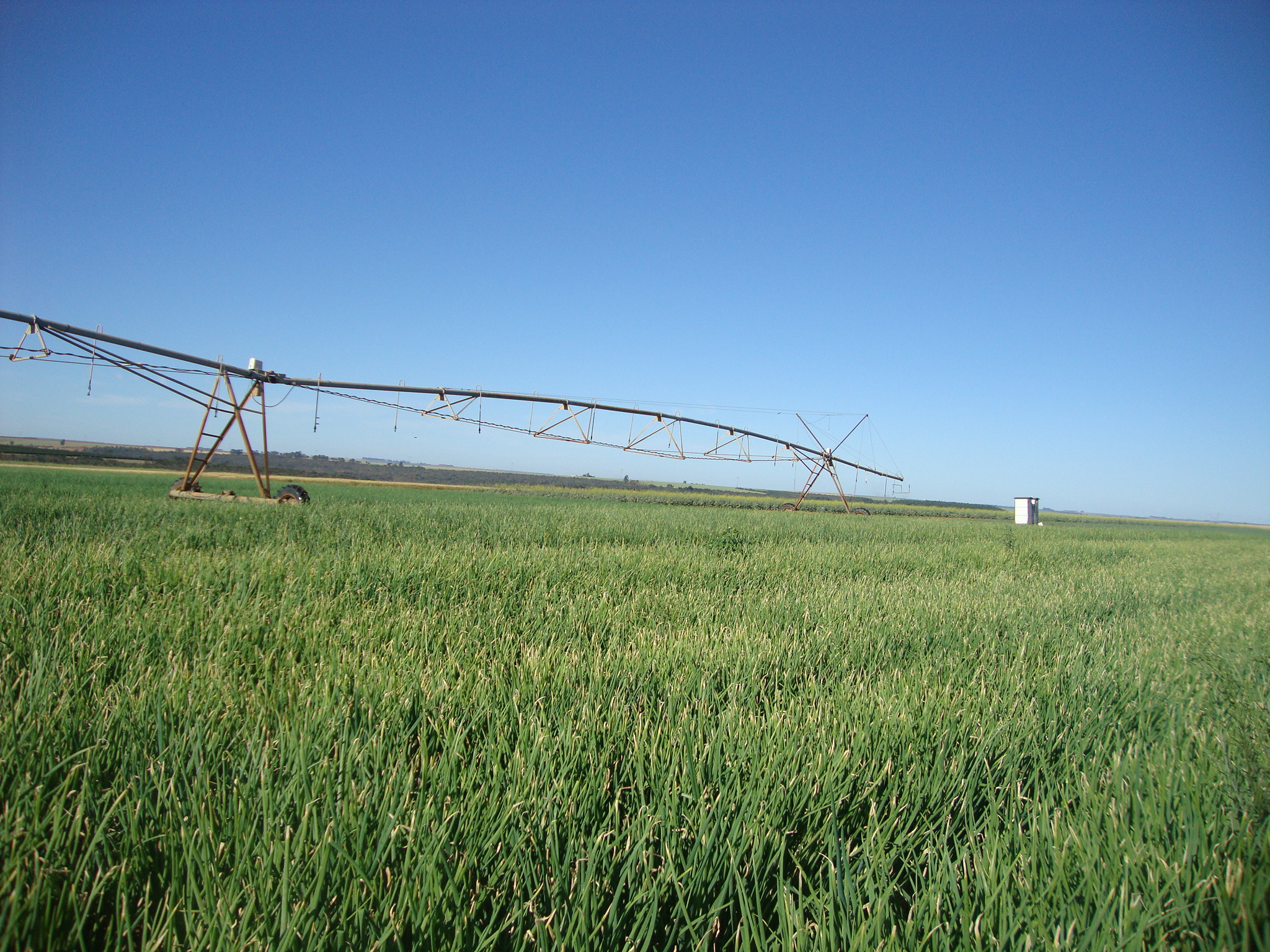Effectiveness of reduced doses of flumioxazin herbicide at weed control in direct sow onions

Abstract
The recommended application of most herbicides in onion crops is after transplanting seedlings with four true leaves. In the direct sowing system, this recommendation is considered late; an alternative management is the application of reduced doses starting with a true leaf. The objective of this study was to evaluate the use of reduced doses of flumioxazin in the early phenological stages of onions on bulb yield. Two field experiments were installed, and five doses of flumioxazin (5, 10, 15, 20, and 25 g ha-1) were applied in three phenological stages (1st, 2nd, and 1st+3rd true leaf); weed control was carried out. The results demonstrated the efficacy of reduced doses of flumioxazin on onion crop in the early stages. The dose of 20 g ha-1 showed use potential in the two experiments for the cvs. Perfecta and Sirius, enabling reductions of 77 to 88% of the commercial dose recommended for onions established with seedling transplanting. The application of flumioxazin in the 2nd leaf reduced commercial productivity and was ineffective in the control of weeds. The application in the 1st + 3rd leaf, despite being an effective control, caused greater phytotoxicity and, therefore, reduced commercial productivity. The best strategy for weed management is 20 g ha-1 flumioxazin applied to onion plants when they reach the true first leaf stage.
Keywords
Allium cepa, Bulb yield, Herbicide, Phytotoxicity
References
- Abbaszadeh, A., M. Dejam, S.S. Khaleghi, and H. Hasanzadeh. 2014. Effect of transplanting date and reduced doses of oxyfluorfen herbicide on weed control, yield and quality of onion (Allium cepa L.) in south of Iran. Indian Journal of Agricultural Research 48(6):453-458.
- Alister, C.A., S. Rojas, P. Gómez, and M. Kogan. 2008. Dissipation and movement of flumioxazin in soil at four field sites in Chile. Pest Management Science 64(5):579-583.
- Agrofit. 2018. Sistema de Agrotóxicos Fitossanitário. In: Ministério da Agricultura, Pecuária e Abastecimento do Brasil, http://extranet.agricultura.gov.br/agrofit_cons/principal_agrofit_cons; consulted: January, 2018.
- Carvalho, D.R., M.F.P. Lima, F.C.L. Freitas, M.G.O. Silva, P.R.R. Rocha, and L.C. Grangeiro. 2014. Eficiência do oxyfluorfen no controle de plantas daninhas na cultura da cebola transplantada irrigada por gotejamento. Revista Agro@mbiente On-line 8(1):127-133.
- Cavaliere, S.D. 2015. Matointerferência. Árvore do conhecimento: cebola. Agência Embrapa de Informação Tecnológica.
- Durigan, J.C., M.R.M. Silva, and A. Azania. 2005. Eficácia e seletividade do herbicida flumioxazin aplicado em pré-emergência na cultura transplantada da cebola. Revista Brasileira de Herbicidas, 4(3):11-17.
- Ferreira, L.R., J.C. Durigan, M.G.C. Churata-Masca, F.A. Ferreira, and A.A. Silva. 2000. Seletividade e eficácia da aplicação sequencial de oxyfluorfen e de ioxynil-octanoato, em semeadura direta de cebola. Planta Daninha 18(1):9-50.
- Ferrell, J.A., W.K. Vencill, K. Xia, and T.L. Grey. 2005. Sorption and desorption of flumioxazin to soil, clay minerals and ion-exchange resin. Pest Management Science 61:40-46.
- Jean-Simon, L., J. Mont-Gerard, and J.J. Sander. 2012. Effect of early season weed competition duration on onion yield. Proceedings of the Florida State Horticultural Society 125:226-228.
- Pereira, W. 2008. Manejo e controle de plantas daninhas em hortaliças. In Vargas, L., e Roman, E.S. (eds.) Manual de manejo e controle de plantas daninhas. Passo Fundo: Embrapa Trigo, p. 603-658.
- Qasem, J.R. 2005. Critical period of weed competition in onion (Allium cepa L.) in Jordan. Jordan Journal of Agricultural Sciences 1(1):32-42.
- Qasem, J.R. 2006. Chemical weed control in seedbed sown onion (Allium cepa L.) Crop Protection 25(6):618-622.
- PPDB. 2018. Pesticide Properties Database. In: Flumioxazin. https://sitem.herts.ac.uk/aeru/ppdb/en/Reports/335.htm; consulted: January, 2018.
- Reis, M.R., C.A.D. Melo, and A.C.L.P. Assis. 2017. Manejo integrado de plantas daninhas em cebola. In Nick, C., and A. Borém (eds.) Cebola – do plantio a colheita. Viçosa: Editora UFV, p. 179-200.
- Robinson, D.E. 2008. Atrazine accentuates carryover injury from mesotrione in vegetable crops. Weed Technology 22(4):641-645.
- Rodrigues, B.N., and F.S. Almeida. 2011. Guia de herbicidas. 6 ed. Londrina: Edição dos Autores. 697 p.
- SBCPD. 1995. Procedimentos para instalação, avaliação e análise de experimentos com herbicidas. 42 p. Sociedade Brasileira da Ciência Das Plantas Daninhas (SBCPD), Londrina, Paraná, Brasil.
- Soares, D.J., R.A. Pitelli, L.T. Braz, R. Gravena, and R.E.B. Toledo. 2003. Períodos de interferência das plantas daninhas na cultura da cebola (Allium cepa) transplantada. Planta Daninha 21(3):387-396.
- Uygur, S., R. Gürbüz, and F.N. Uygur. 2010. Weeds of onion fields and effects of some herbicides on weeds in Cukurova region, Turkey. African Journal of Biotechnology 9(42):7037-7042.
